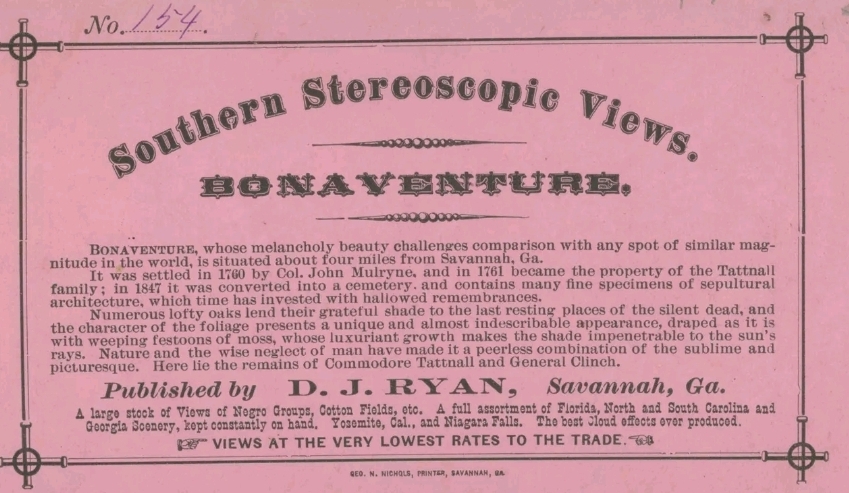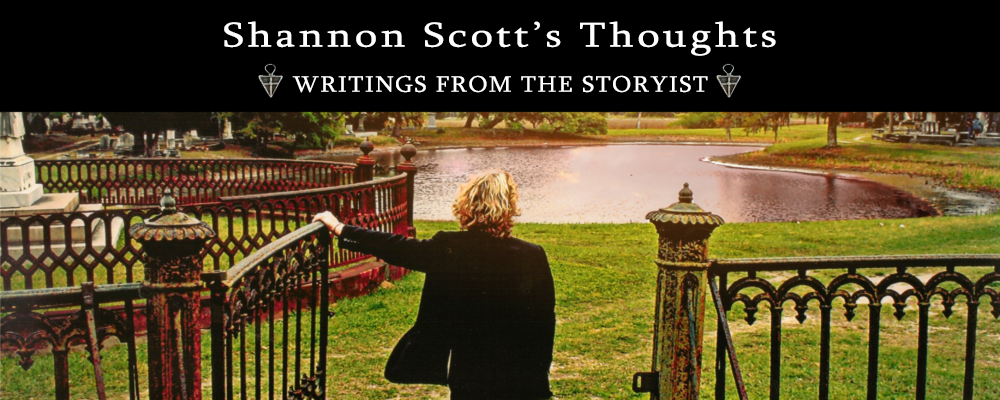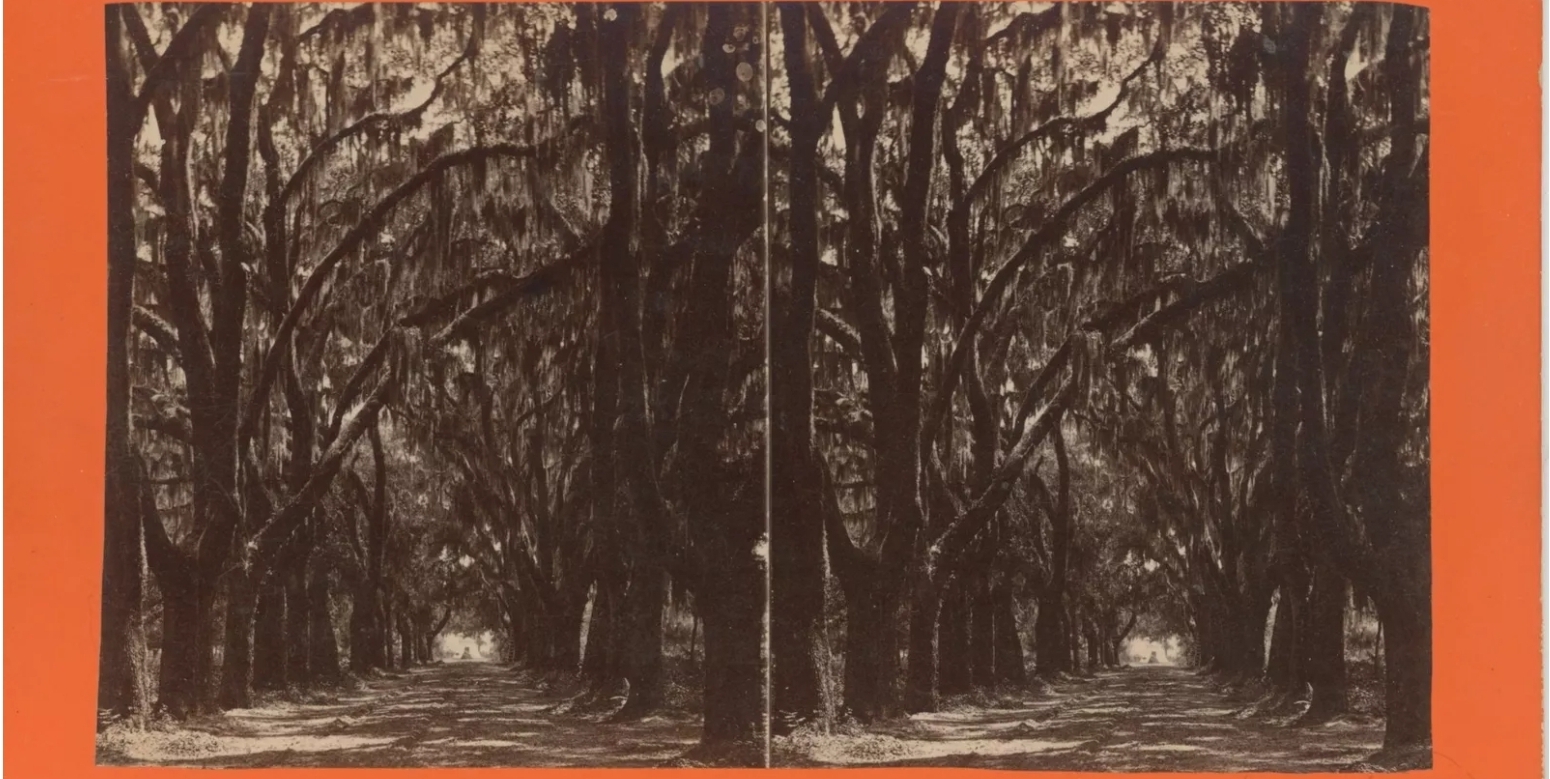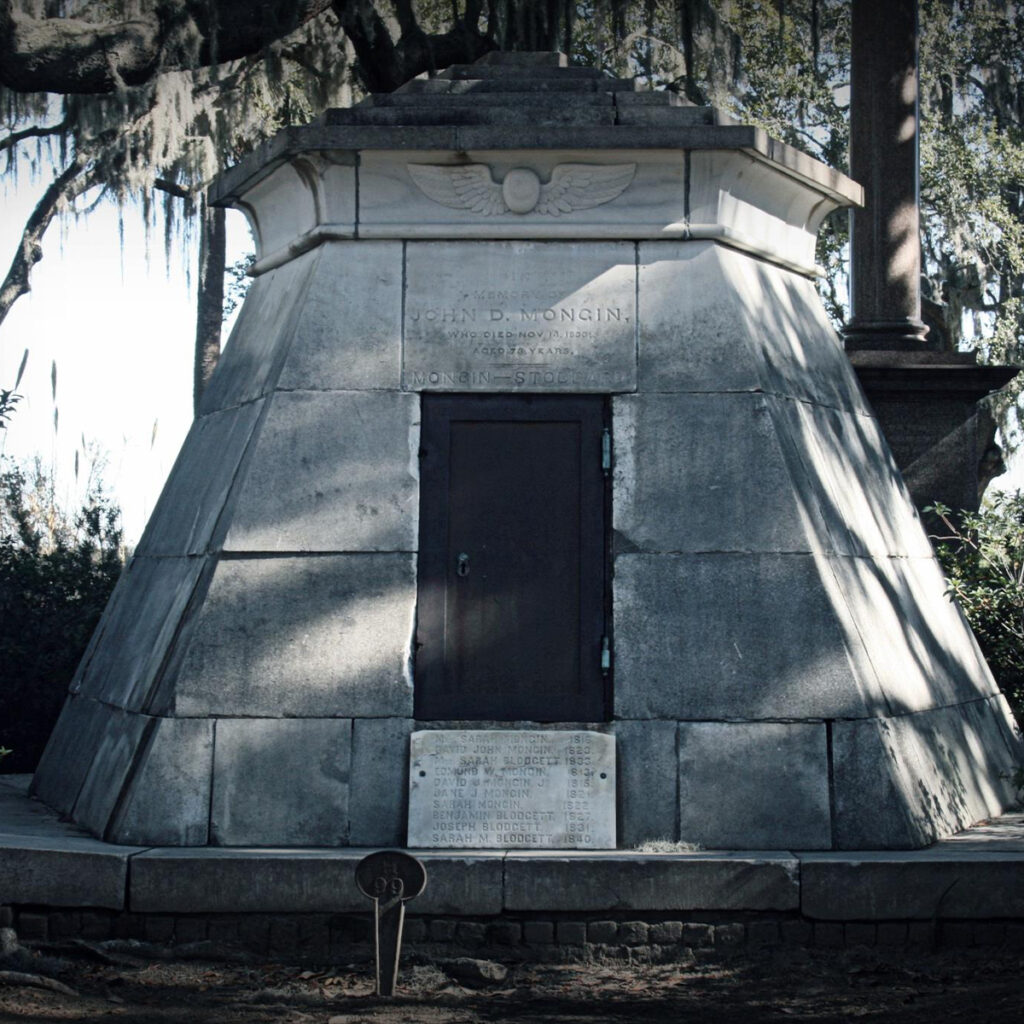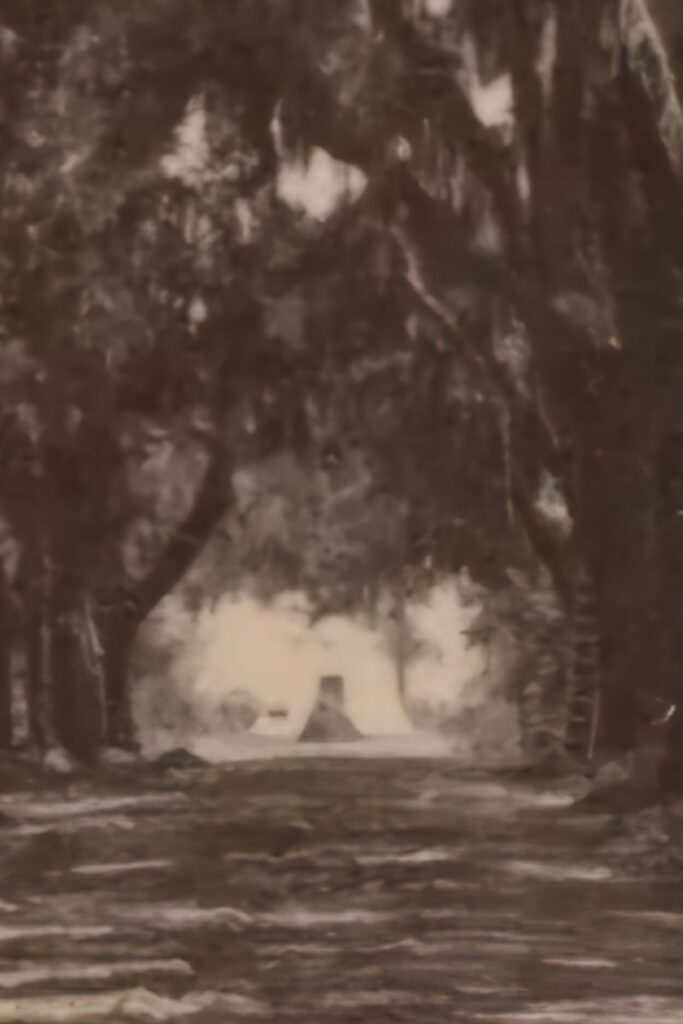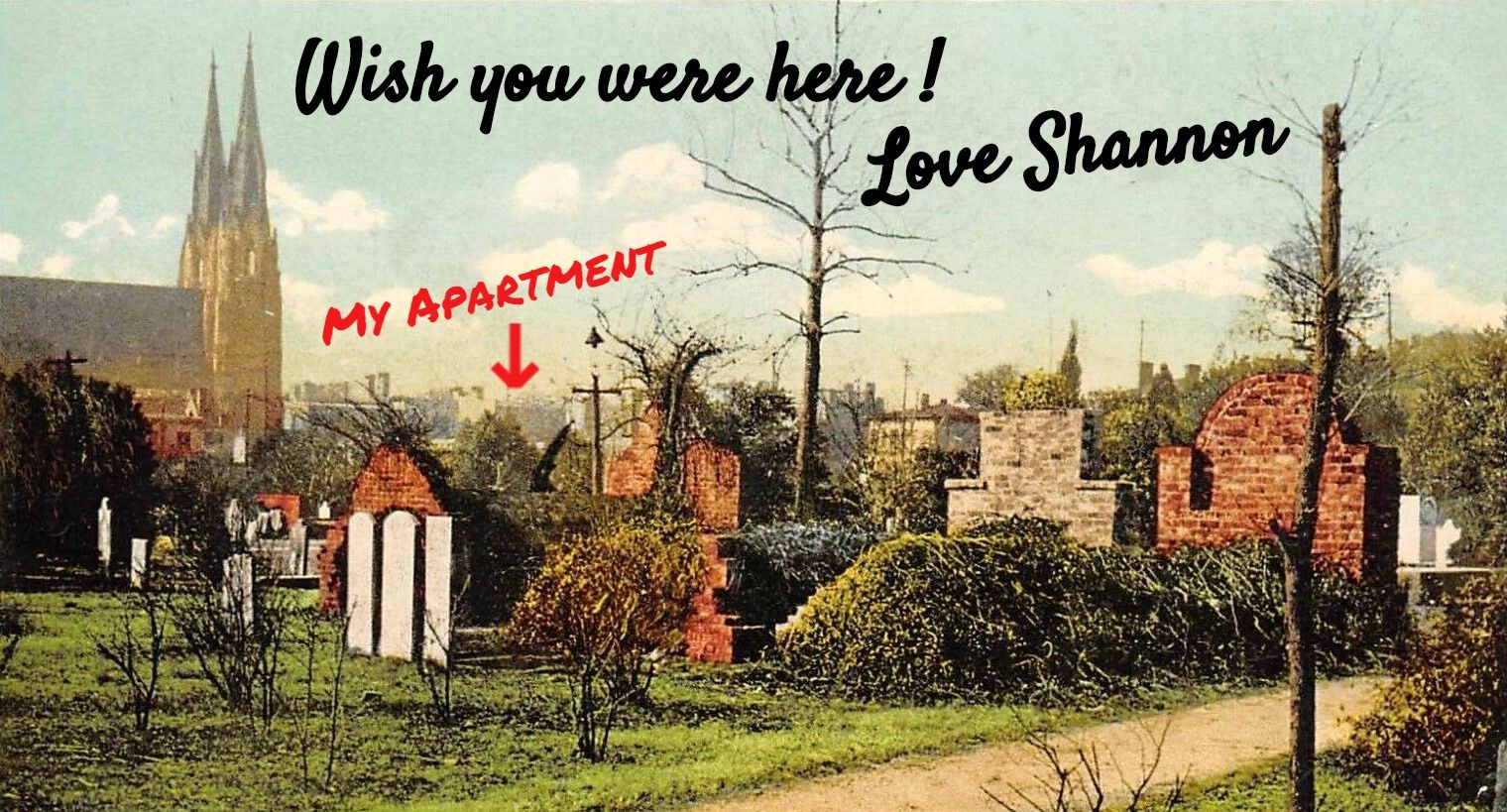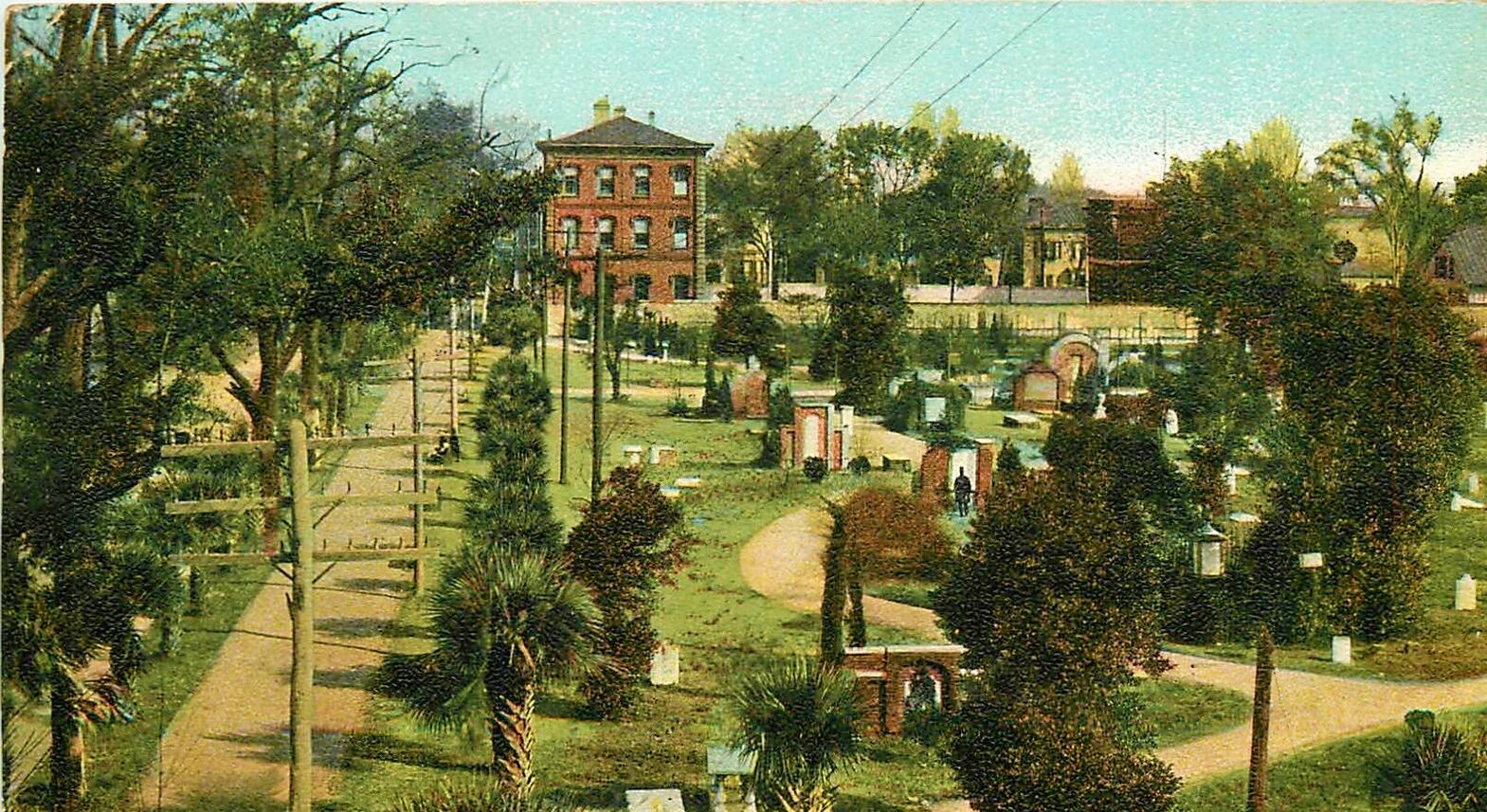Historically speaking, one of the rarest Bonaventure Cemetery stereo-views was created by D.J. Ryan of Broughton St. in Savannah, GA – rare for a couple of significant reasons. Generally, there were 2 classic shots sold to collectors (tourists), featuring either the Bonaventure Plantation live oak drive going straight to the river bluff or, more popularly, the live oak alley leading to the original burial section or the “Colonial Garden,” where one visibly sights the George Jones marker as a finishing focal point. At first glance of this 1870s stereo-view, I perceived it to be just that and nearly passed it over. But, I have a studious eye. I couldn’t believe what I was seeing and delightedly so – the ever-mysterious Mongin Tomb! And way, way down at the end! I mean, haystack needle, really.
Today such a photo would be impossible to capture as the road was altered by cemetery growth and if one looks hard enough, you’ll see a mound of some kind in the front of the plot where today a fairly massive Magnolia tree has grown, impeding the viewer. Notably, that may be the start of the planting hour for it. Speaking of plants, much like cemetery workers rake and pile leaves today, you can see such piles along the roadway, and then on the far right side you can see a primitive tree ladder which am first to admit is very hard to see! Earlier I used the word “rare,” partly because I peruse Bonaventure stereo-views every week and this is simply one I’ve not come across in many years, so that’s my use of the word, only. But really what makes this a “rarity” is the impeccable condition of the image as more often than not, the object at the end of the tree tunnel is worn away from handling or is so far away from the camera it ends up ultra fuzzy and hard to distinguish. So, to the credit of D.J. Ryan, who may have patiently waited, the sunlight was bouncing off of what then was gleaming white marble (as opposed to now), and he nabbed the shot as perfectly as it could be done. On a final note, the capture is special because The Mongin (& Stoddard) Tomb had just arrived in Bonaventure, recently moved from Daufuskie Island, SC by barge, and D.J. Ryan, perhaps the first to visually document it and may have been his own inspiration in the first place.
One more share for the history and antique photo nerds!
HISTORY EXTRA – D.J. Ryan famously photographed Robert E. Lee and E.J. Johnston to commemorate “Lee’s Farewell Tour of The South,” in 1870

